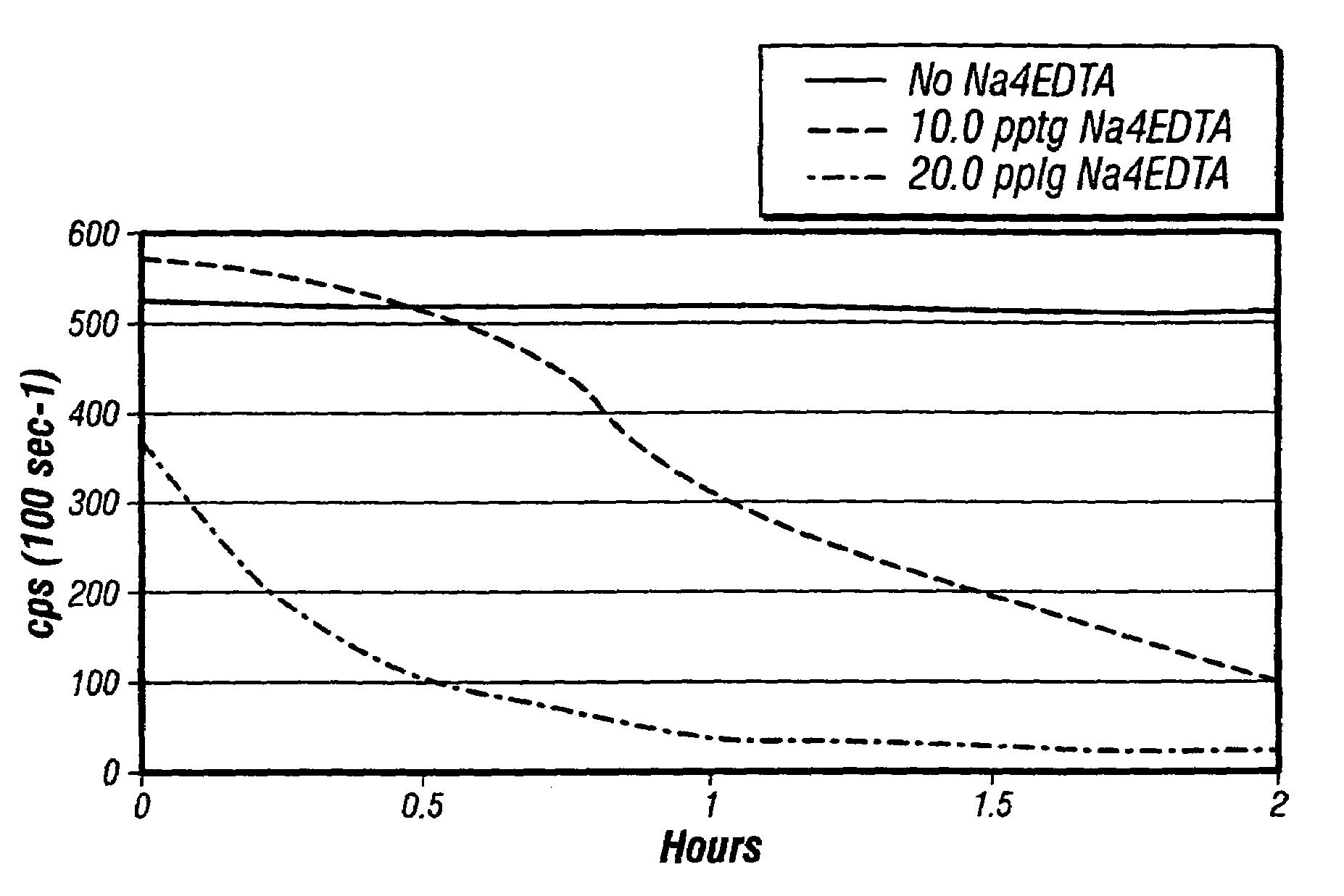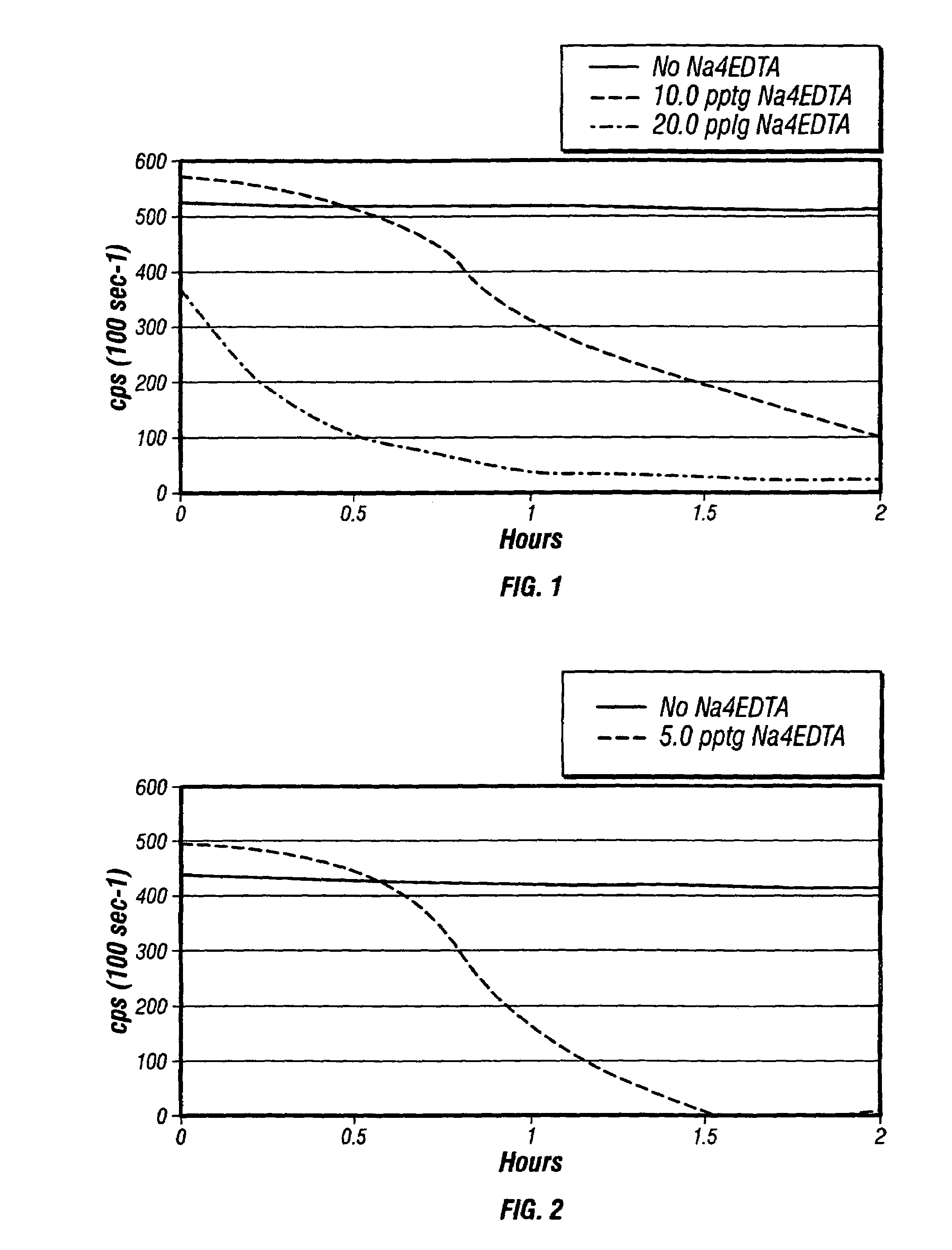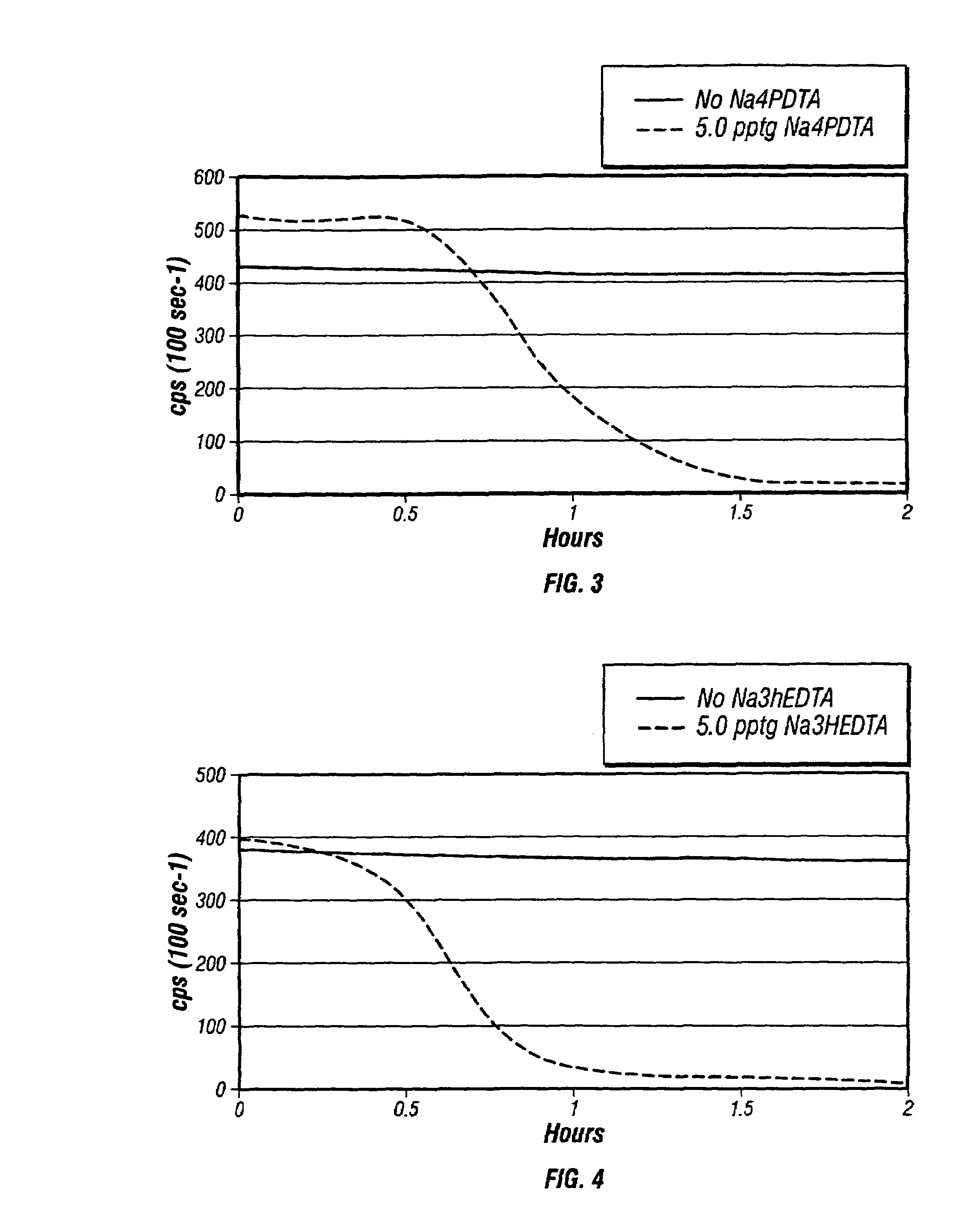Aminocarboxylic acid breaker compositions for fracturing fluids
a technology of fracturing fluid and aminocarboxylic acid, which is applied in the direction of separation process, other chemical processes, borehole/well accessories, etc., can solve the problems of fluid deformation, complex art of fluid development, and inability to close or heal cracks or fractures completely
- Summary
- Abstract
- Description
- Claims
- Application Information
AI Technical Summary
Benefits of technology
Problems solved by technology
Method used
Image
Examples
example 1
[0037]Example 1 tested Na4EDTA at 10.0 pptg (1.2 kg / m3) and 20.0 pptg (2.4 kg / m3) levels in BoraFRAQ® 30 borate crosslinked polymer gel at 150° F. (66° C.). The results are compared against a fluid without using an aminocarboxylic acid as plotted in FIG. 1. It may be seen that the viscosity of the gel was broken quickly with this aminocarboxylic acid (about 0.5 hour), particularly at the 20.0 pptg (2.4 kg / m3) dosage.
example 2
[0038]Example 2 tested Na4EDTA at the 5.0 pptg (0.6 kg / m3) level in BoraFRAQ® 30 borate crosslinked polymer gel at 175° F. (79° C.). The results are compared against a fluid without using an aminocarboxylic acid as plotted in FIG. 2. It may be seen that the viscosity of the gel was broken quickly and substantially after about 1 hour with this aminocarboxylic acid salt.
example 3
[0039]Example 3 tested Na4PDTA at the 5.0 pptg (0.6 kg / m3) level in BoraFRAQ® 30 borate crosslinked polymer gel at 175° F. (79° C.). The results are compared against a fluid without using an aminocarboxylic acid salt as plotted in FIG. 3. It may be seen that the viscosity of the gel was broken quickly and substantially after about 1 hour with this aminocarboxylic acid salt.
PUM
| Property | Measurement | Unit |
|---|---|---|
| Temperature | aaaaa | aaaaa |
| Temperature | aaaaa | aaaaa |
| Temperature | aaaaa | aaaaa |
Abstract
Description
Claims
Application Information
 Login to View More
Login to View More - R&D
- Intellectual Property
- Life Sciences
- Materials
- Tech Scout
- Unparalleled Data Quality
- Higher Quality Content
- 60% Fewer Hallucinations
Browse by: Latest US Patents, China's latest patents, Technical Efficacy Thesaurus, Application Domain, Technology Topic, Popular Technical Reports.
© 2025 PatSnap. All rights reserved.Legal|Privacy policy|Modern Slavery Act Transparency Statement|Sitemap|About US| Contact US: help@patsnap.com



